Questing for Gold: 2023 Saudi Birding Summer Bird Tour!
- saudibirding

- Jul 13, 2023
- 17 min read
Updated: Jul 28, 2025
Tour Dates: July 1 - 7, 2023
Participants: Max Berlijn, John Clark, Rob Dobson, Tim Doran, Enno Ebels, and Rob Leighton
Leader: Gregory Askew
Co-leader: Ibrahim Al Shwamin
Avian Highlights:
Helmeted Guineafowl
Sand Partridge
Harlequin Quail
Arabian Partridge
Philby's Partridge
Rameron Pigeon
Red-eyed Dove
Nubian Nightjar
Plain Nightjar
Red-knobbed Coot
Greater Painted-Snipe
Small Buttonquail
Crab-Plover
White-eyed Gull
Abdim's Stork
Hamerkop
Intermediate Egret
Oriental Honey-Buzzard
Gabar Goshawk
African Shikra
Arabian Scops-Owl
Arabian Eagle-Owl
Little Owl
African Grey Hornbill
Grey-headed Kingfisher
White-throated Bee-eater
Arabian Green Bee-eater
Abyssinian Roller
Barbary Falcon
Arabian (Black-crowned) Tchagra
Gambaga Flycatcher
African Paradise-Flycatcher
Arabian Woodpecker
Asir Magpie
Rufous-capped Lark
Horsfield's (Singing) Bushlark
Arabian Lark
Temminck's Lark
"Mangrove" Reed Warbler
Brown Woodland-Warbler
Yemen Warbler
Arabian Warbler
"Mangrove" White-eye
Arabian Babbler
Violet-backed Starling
Tristram's Starling
Yemen Thrush
African Stonechat
Buff-breasted Wheatear
Arabian Wheatear
White-crowned Wheatear
Blackstart
Arabian (Shining) Sunbird
Arabian Golden Sparrow
Arabian Waxbill
Arabian (Olive-rumped) Serin
Yemen Serin
Yemen Linnet
Other Wildlife Highlights:
Striped Hyena
African Wildcat
King Jird
Anderson's Rock Agama
Yemen Rock Agama
Eurasian Marsh Frog
Arabian Skippering Frog
Saudi Birding's July tour has come and passed and what a tour it was! While we did have some hot days, particularly in Riyadh and at some of our coastal spots, we were undeterred and kept up our birding efforts throughout. By the end of our seven-day tour, we had tallied a total of 161 species, including all but one of our endemic and near-endemic targets as well as a few nice surprises.
Here's a day-by-day summary of how we did.
Day 1—Riyadh

We kicked off the birding tour in a swathe of sand-gravel desert north of Riyadh. Here, thanks to Dutch birder Mischa Keijmel, who had been surveying the area prior to our arrival, we got on Arabian Lark within the first 15 minutes of arriving. This otherwise challenging species was accompanied by our first Bar-tailed and Greater Hoopoe-Larks of the day. By the time we headed to our second spot of the morning, we had added two immature Temminck's Larks.
A brief stop at a wadi near the town of Huraymila produced Desert Lark, Arabian Babbler, Blackstart, and White-crowned Wheatear among some more common species.

Our last stop of the morning before heading for lunch in the city was at a farming village, nestled in a wadi, called Shaib Ghayanah, where I suspected we'd have our best chance for some of our remaining targets. One client needed Sand Partridge, and though late in the morning, the relative stillness in the wadi was promising. Sure enough, we worked the edge of a derelict farms at the far end of the village and found two small groups of partridge moving uphill from the wadi bottom, including a female and a clutch of several chicks. Here was also found our first African Collared-Dove, Arabian Green Bee-eater, White-spectacled Bulbul, and Black Scrub-Robin of the tour.

After a wonderful traditional lunch at a heritage restaurant recommended by Saudi bird photographer and co-leader Ibrahim Al Shwamin, we freshened up at the Riyadh Airport Marriott before our afternoon flight to Al Bahah.

Day 2—Al Bahah
Our first morning in the highlands of the southwest began in the pre-dawn hours at the Al Khairah Forest Park, where Ibrahim led us away from the many late-night picnickers to a quiet corner of the park. Here we heard and soon had great views of Plain Nightjar, three males of which were holding territory in the area. Shortly after, our first Arabian Scops-Owl of the tour flew in and offered long, satisfying views as it called from an exposed perch.
Over hot cups of coffee and snacks, we greeted the day and were greeted in turn by an array of fun highland species, including a few of our endemic targets. Scanning a hillside opposite us we soon had our first views of Philby's Partridge, which proved easier to find during the first two days of the highlands leg of our tour.
With the morning chorus in full swing, it was time to turn our attention to the main target around Al Bahah—Arabian Grosbeak. Despite a thorough thrashing of the two main wadis where they have been seen over the past two years, this proved to be the one endemic that would ultimately evade us during the tour. Two participants, however, had glimpses that morning of what they believed to have been the grosbeak. This Arabian endemic is clearly not as abundant in Saudi as it is in Yemen and southern Oman. In the past 20 years, the half dozen or so sightings have been along a stretch of the Sarawat Escarpment from roughly Taif south to Al Bahah. There have been no records from the Asir or Jazan regions since 2002.
Thankfully we were consoled in our failure by the abundance of other birds. Before hitting the road towards magpie country, we had added Dusky Turtle-Dove, Shikra, Grey-headed Kingfisher, Violet-backed Starling, Tristram's Starling, Brown Woodland-Warbler, Scrub Warbler, Arabian Warbler, Abyssinian White-eye, Yemen Thrush, Gambaga Flycatcher, Little Rock Thrush, Arabian Wheatear, Ruppell's Weaver, Arabian Waxbill, Olive-rumped Serin, Yemen Linnet, Cinnamon-breasted Bunting among others.
On the road to Al Namas, where we'd spend the night before exploring the Tanomah area, we picked up some other nice trip firsts, such as a breeding pair of Hamerkop near Sabt Al Alayah, African Pipit and African Stonechat near Al Qahtan, and Little Owl, Dideric Cuckoo, Bruce's Green-Pigeon, and Buff-breasted Wheatear in Al Namas. Also of interest in Al Namas was a small colony of King Jird, a large, long-tailed rodent endemic to southwest Saudi and Yemen.
After dropping off our bags at the hotel, we went back out for owls and nightjars at Al Mehfar Resort, north of Tanomah. This has been the most reliable spot to date for Arabian Eagle-Owl; however, on this particular night there were many people around and the owls were nowhere to be found. We did hear a distant Arabian Scops-Owl though. I was nervous that we wouldn't find the eagle-owl further on, but we did have two more spots to try. We also tried for Desert Owl here as well as at the nearby Al Wahdah woods, but, as promising as both spots are, we had no luck. The winter months are the best for locating this species as they more readily respond to playback.
Day 3—Tanomah
There was much excitement on our way to Tanomah as this was the day we were sure to find the Asir Magpie, a critically endangered highland specialist found only in the Asir Region and one mountain in the Jazan Region. Shortly past sunrise we picked up a small group of magpies as we passed a village just south of Tanomah proper. These would be the first of nine we'd see along a single stretch of road out to the escarpment edge.

This road runs alongs a ridge overlooking Wadi Ghathal, another prime area for magpies, so we stopped to scan the wadi and see what else we might find. Soon one of the tour participants drew our attention to an odd "striped dog" trotting along down in the wadi bottom. With a sharp twang of recognition at his curious description, I peered through his scope to confirm that we'd in fact found a Striped Hyena. While not uncommon, a daytime observation of this heavily persecuted mammal is virtually unheard of. Aware of our presence, the hyena hurried to more secure positions in the wadi below from where it could observe us before eventually cresting a ridge opposite and dropping out of sight. This was by far the best non-avian sighting of the trip and one that I can only hope to repeat during future tours.

At the edge of the escarpment further on, while enjoying our first cups of coffee of the morning, we had another unusual encounter but this time of the avian kind—a male Pied Cuckoo at around 2400 meters ASL. This species is generally considered a migrant species on the Arabian Peninsula, passing between South Asia, where it breeds, and East Africa, where it winters. However, in recent years, it has been encountered throughout the year on the coastal plain (Tihamah) of southwest Saudi, where we saw a few more during the tour and where one Saudi bird photographer captured images of a weaver feeding a young cuckoo, confirming what is likely the first breeding record for Arabia. Our encounter, as far as I know, represents the highest elevation at which this species has been recorded.
After observing a few more magpies, we made a brief stop at Wadi Dahna, where we discovered one of the villagers had installed a locked gate where we used to descend into the wadi during previous visits. While the wadi can still be accessed from other points, we contented ourselves with our first views of Yemen Warbler from a perch above the wadi before stopping for breakfast at the resort built recently besides the Dahna Waterfall. This was once the easiest place to find magpies in Tanomah and a former nesting site. During breakfast, I didn't detect any, suggesting that the disturbance caused by the construction of the resort and the subsequent loss of trees—roughly a quarter of what had been there previously—was significant enough to drive them away.
After breakfast we visited Al Sharaf Park with two targets in mind—Arabian Woodpecker and Yemen Serin. We connected with the serin on arrival, with two birds observed feeding along the roadside and then found a pair of woodpeckers after a short hike into a juniper and acacia woodland deeper inside the park. This particular spot was quite beautiful and active with several other species, including African Paradise-Flycatcher, and offered us our best views of Yemen Warbler. Overhead we picked up Eurasian Griffon and Short-toed Snake-Eagle as well as a flock of Pallid Swift.
Next stop, Abha, but on the way we drove through Bihan for another encounter with Asir Magpie and then called in at Wadi Reema. The wadi was noisy with picnickers but still active with birdlife. African Pipit and Rufous-capped Larks were in full song flight, and two African Silverbill were a further addition to the trip list. While the larks didn't offer satisfying views, necessitating a follow-up attempt at Habala the next day, I did come away with a three-minute audio recording of one in tireless song flight, giving a fuller sampling of its amazing repertoire of phrases than in my previous recordings of the species.
Day 4—Abha
The next day we met up with my friend Jacky Judas at Raidah Preserve. Here we had three main targets, our last in the highlands—Arabian Partridge, Arabian (Black-crowned) Tchagra, and Arabian (Shining) Sunbird. Visiting Raidah involves a steep descent from the edge of the escarpment at around 2900 meters ASL down to around 1100 meters at the foot. Around the upper third of the escarpment, which is dominated by junipers, we found a couple small coveys of Arabian Partridge along the road as well as a few flighty Rameron Pigeons. Hamadryas Baboons were loafing about here and there as well. Soaring back towards the top of the escarpment were two Short-toed Snake-Eagles being harried by a pair of Barbary Falcons, the first of three Saudi ticks for me.
For the tchagra and sunbird we would have to drop another 1000 meters as these are mid-elevation specialists and could easily be missed on a tour of Saudi if one only birds the top of the escarpment and the Tihamah lowlands. We got our first Arabian Sunbird at the succulent forest around 1500 meters ASL. Here you'll find the invasive Prickly Pear Cactus growing thick besides the endemic Yemen Aloe Trees and odd Euphorbia Amak cluster. A little further down we found three Arabian Tchagra in thick tangles by the roadside along with the first of two African Grey Hornbills and our first White-browed Coucals of the trip.

Once we finished up at Raidah, Jacky led the way to Soudah Creek, which is now accessible by permission only, for our second attempt at Arabian Eagle-Owl. A pair had been observed roosting mid-cliff near the entrance of the wadi and Jacky had seen there nearly a dozen times, so we figured the odds were good that we'd make up for our failure in Tanomah. Just a rather soggy challenge to contend with first. Heavy rains had left the entrance to the wadi inundated with water. To get to the roost spot we'd need to wade through knee-deep water, a call to adventure of which only half the group heeded the call. For those that did, no owls awaited our sopping shoes but it was nice to see the wadi cleared of litter and active with other birds, such as a miffed pair of African Stonechat, whose nesting activity we had clearly disturbed. Those waiting outside the wadi entrance for news of the owls were treated to a resident pair of Arabian Partridge at the nearby village and stonechat views of their own.

We then bid Jacky adieu and headed south towards Habala for another go at Yemen Serin and Rufous-capped Lark, stopping at the Abha Dam for Red-knobbed Coot, my second Saudi tick for the trip. Birding was difficult along the cliff's edge at Habala owing to the crowds of people, whose interest in us bordered on obnoxious at times. The serins, usually foraging on the ground or perched on the cliff face, were nowhere to be found, so we beat a retreat back to the cars and looked for a quieter place to bird. A short distance away we stopped at a series of fields where we located a pair of Buff-breasted Wheatear. This is a newly minted endemic species for which there hadn't been any audio recordings in the Macaulay Library or Xeno-Canto. One of my goals for the trip was to obtain the first. The only issue was that, while I had seen them during each of the nearly dozen visits I made to the southwest, I had never observed them vocalizing. To help induce singing, I used a recording of Rusty-breasted Wheatear (O. frenata) from Ethiopia, the East African highlands species from which it was split. The playback did indeed get the attention of the male, who gradually moved closer. Occasionally he flew quite close to the female, crouched low and gave a low, scratchy interaction call, which I was excited to capture, but what joy when he flew up from the ground, perched on a power line nearby and engaged in a few snatches of sub-singing all the while I was recording. I am happy to present here the first sound recordings of Buff-breasted Wheatear (O. bottae).

We wrapped up the day's efforts at a nearby a flat, stony swathe atop the Habala plateau. This is my go-to spot for Rufous-capped Lark; however, outside the breeding season the birds are much thinner on the ground and often require more searching to finally track them down. Not so in the summer. Stepping out of the cars and a dozen males could be heard singing from all directions. Soon we were finding birds on the ground, often behaving as if nests were quite near, but we were unable to locate any.
Our time in the highlands had come to an end and our scorecard was missing two endemics. Failing to find the grosbeak was disappointing, but there was never a lack of great birding. As for Arabian Eagle-Owl, we still had one lowland spot to try, so there was still hope.

Day 5—Jazan Coast

We headed out early to make the descent to the lowlands when traffic on the escarpment road would be lighter. We expected much hotter and muggier proceedings, so we aimed to reach our first birding stops shortly after sunrise. The target of the morning was Arabian Golden Sparrow. At one stop we found a pool of water near the roadside that was attracting a large number of birds. Here a few from the group caught distant views of a few golden sparrows. Here the lowland specialties Chestnut-bellied Sandgrouse, African Palm Swift, Black-crowned Sparrow-Lark, and Nile Valley Sunbird were added to the trip list. We then proceeded to the village of Abu Rayyan where we found a flock of around 50 Arabian Golden Sparrows mixing with House Sparrows, Ruppell's Weavers, and African Silverbills. A few leaking water lines at the edge of the village appeared to be the big draw for the flocks. Whether Abu Rayyan is a reliable spot for the sparrows year round is to be seen though.

After ticking the golden sparrow, we worked our way along the coast, starting at the Either Mangroves. The heat and humidity was intense at the mangroves. At the spot where we've been seeing individuals from the local mangrove population of Abyssinian White-eyes, we were only able to find the Red Sea mangrove subspecies of Eurasian Reed Warbler and Clamorous Reed Warbler. We managed to add some interesting shore- and seabird species to the trip list here though, including Terek Sandpipers, still in summer plumage, and Gull-billed Terns among others.

Along the Jazan's North Corniche we had a greater array of coastal birds, some of which are regional specialties like Crab-Plover, Sooty Gull, Saunders's Tern, White-cheeked Tern, and Pink-backed Pelican. On a hunch, we found the first White-eyed Gulls hanging around the parking lot at Al Baik Chicken, true to gulls the world over. These were all young birds, but we did find a larger gathering south of the port that contained some striking adults.

At the heritage village lagoons, wastewater treatment facility and sea park, shore- and seabirds were quite abundant and we easily added a dozen species. At the sea park, we found a lone Red Sea Osprey fishing out past a line of marching mangroves just offshore. A few over-summering Heuglin's Gulls as well as a single Slender-billed Gull were a surprise plus-two to our gull list. One surprise disappointment was the total absence of Lesser Flamingo. A few hundred plus had been hanging out near the wastewater treatment facility and multiple nesting mounds had been constructed but it's not clear whether they had ever bred successfully. This visit the water level was quite low, perhaps reflecting a drawdown of the facility's output, and all but a dozen or so Greater Flamingo remained.
The plan after checking in at our hotel in Abu Arish was to make it to the Jazan Dam Lake by sunset in the hopes of catching Lichtenstein's Sandgrouse coming in to drink. It ultimately took us longer to get out there but a spot-lit visit to the water's edge produced the biggest surprise of the tour—a handsome female Greater Painted-Snipe. This rare resident breeder in the southwest is unusually sexually dimorphic in that the female is not only larger than the male, but she also sports a brighter plumage and in fact plays a reversed role in breeding, whereby males mind the nest. We were looking for Nubian Nightjar at the time and shortly after leaving the painted-snipe we stumbled upon a male Nubian actively courting a female, calling occasionally and doing small hop-flights towards her. In his distraction, he made for a more ready subject for the photographers in our group and allowed me to capture a couple nice sound recordings. On the mammal front, eye shine from the grassier patches around us revealed hunting African Wildcat. All the ones we saw that evening looked "pure"; however, the next day we saw a pure-looking individual with another that was clearly a feral mix so hard to say.
Nubian Nightjar and Arabian Eagle-Owl from near Jazan Dam Lake. © John Clark
From there we headed to a spot near the lake where Arabian Eagle-Owl had been seen in the past two years. Not holding out much hope but still eager for the third attempt, we drove to the spot, which turned out to be a large unfinished building—just the concrete exterior looming large in the darkness. We waited about ten minutes before one of our group spotted an owl perched on the side of the building. Soon I noted a second bird, the male, calling from a powerline further away. In time, we not only got great spot-lit views of our last endemic of the tour, but I also got a really satisfying recording of the male calling. Third time would prove the charm once more before tour's end.
Day 6—Abu Arish
Early the next morning we were back out at the lake but this time in search of Helmeted Guineafowl, which is suspected by some to be an Arabian subspecies of this widespread African ground bird. In support of this assessment is the fact that this population lacks a horn projecting from their "helmets". The first stop of the morning proved fruitful with two birds observed further up the track shortly after arriving and another two documented from a distance. Four other individuals were seen and photographed on the east side of the lake as well.
As we made our way around the lake, we saw a few more key Afrotropicals—Red-eyed Dove, Gabar Goshawk, and White-throated Bee-eater—and had a fly-by Intermediate Egret, a species which, given the number of recent sightings, could be a potential breeder.
With no other inland targets, we worked the coast of Jazan again in the hopes of getting better views of terns, Saunders's in particular, and possibly picking up new birds for the trip. A quick round of seawatching at one stop produced a lone Brown Booby fishing close to shore and singles of Bridled Tern passing further out to sea, and then a return visit to the Either mangroves turned up a Little Tern and a calling Arabian Collared Kingfisher. Again, though, the "Mangrove" White-eyes were nowhere to be found.
Day 7—Sabya
The last day of the tour arrived and we had five targets left on the docket—Harlequin Quail, Small Buttonquail, Abdim's Stork, Abyssinian Roller, and, of course, "Mangrove" White-eye. We started the day out at a series of pivot fields near Sabya. As usual, the fields in the early morning were quite noisy with bird song. All around us could be heard Horsfield's Bushlarks and Zitting Cisticolas among the Common Mynas and Graceful Prinias. Through the morning din, male Harlequin Quail could be heard calling here and there in one of the fields. We zeroed in on the sound and soon got decent views of a few different individuals. A deep lowing coming from the backside of the pivot field alerted us to the presence of Small Buttonquail. These took longer to get views of, the calls seeming ventriloquistic in that they were often further away and in different locations than expected. At one point I recorded two females calling from virtually under my feet, as it seemed, only to march straight on through where I thought they were clear to edge of the field with no sight of the birds. After having toggled for a bit at the back end of the field, we eventually put up two of the buttonquail, perhaps the same two I had recorded earlier, and were able to get good comparisons between them and the similarly built Harlequin Quail. In addition to the two ground birds, we also found three Abyssinian Roller perching on a nearby pylon and an irrigation arm.
Harlequin Quail and Small Buttonquail from near Sabya. © Enno Ebels
A brief stop at the Al Hajariah Farms, where a large flock of golden sparrows and one of hypocolius had been seen in the past, produced a dark-phase Oriental Honey-Buzzard, an otherwise Indomalayan species that has been increasingly seen throughout the year southwest Saudi. This was actually my second summer record in the region.
After another stellar morning of birding, that just left the stork and the white-eye as targets. Over a nice Arabic breakfast back at the hotel, I pinpointed in eBird a few spots closeby where we might try for the stork, all within a wide wash running east to west through the Sabya area. At the very first stop, Salhabah Farms, we noted what appeared to be a small dump site off from the road, and in the sky overheard circled a small group of Abdim's Storks. Tick!
Having found the stork so quickly, we had ample time for a third attempt at the white-eye. The conditions at the Either mangroves were much more forgiving with both the heat index and wind speed lower than during the previous visits. We tried three different spots along the mangroves, and the third, some 150 meters from where we initially tried, produced the "Mangrove" White-eye. Same as other recent encounters, only two birds were observed. This is a population that might not ultimately be recognized as a distinct subspecies, as preliminary studies have shown that, while plumage differences exist, these birds are basically the same genetically as the highland population. Visually they're prettier than the latter with slightly larger eye rings, brighter and seemingly more extensive coloring on the throat and breast, as well as brighter upperparts all around. Needless to say, we were happy that once again the third try was the charm.

Overall it was a very successful bird tour and not nearly as challenging for it being summer in Arabia than even I was expecting. Given how abundant so many of our targets were and the availability of species, like Plain Nightjar and Gambaga Flycatcher, otherwise absent outside the summer months, it's likely that there'll be a Saudi Birding tour July or August 2024 as well. Watch HERE for updates.
Good birding, y'all!

Interested in going birding with Saudi Birding? Click HERE to explore expert-guided bird tours in Saudi Arabia and elsewhere around the Middle East. We also offer custom tours tailored to your interests and preferred pace, combining targeted birding with other experiences tailored to your personal interests and preferences.

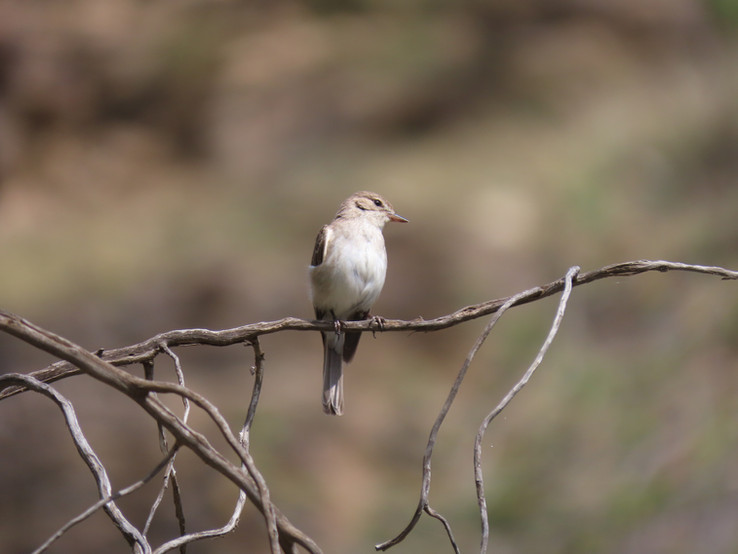

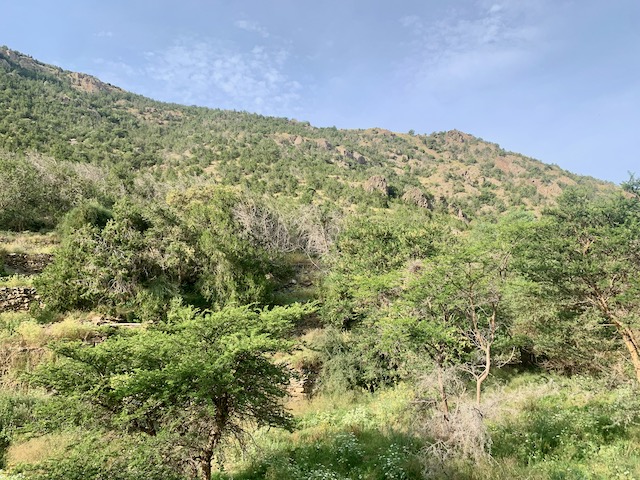

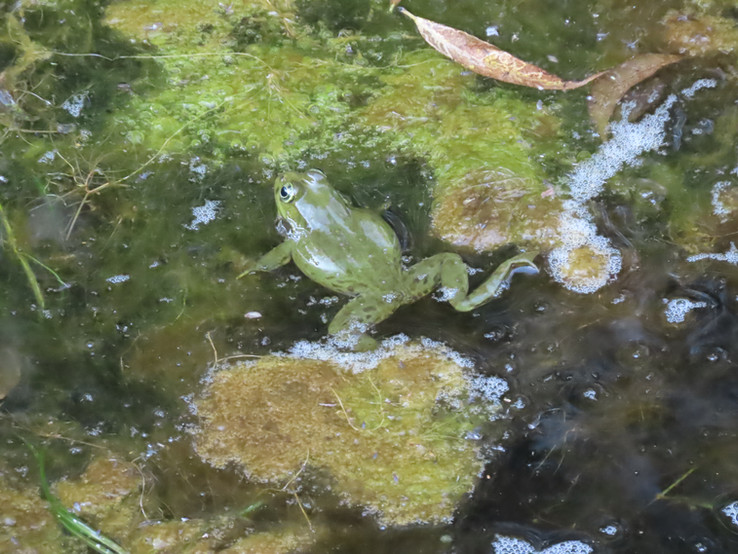





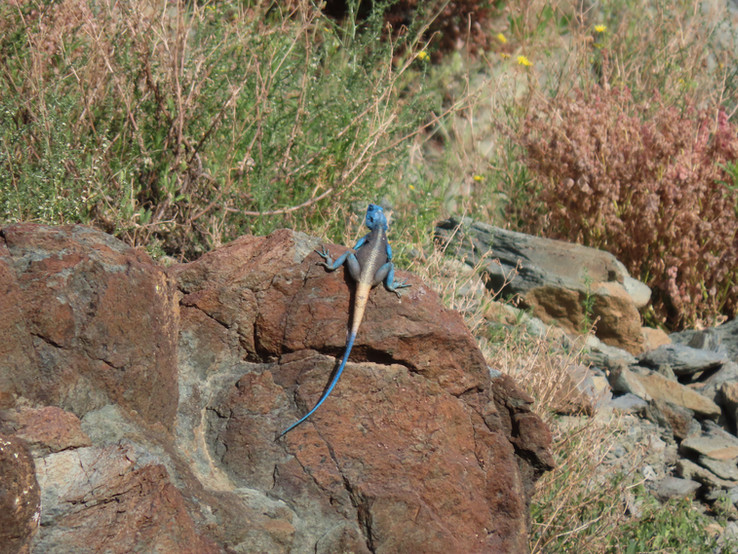

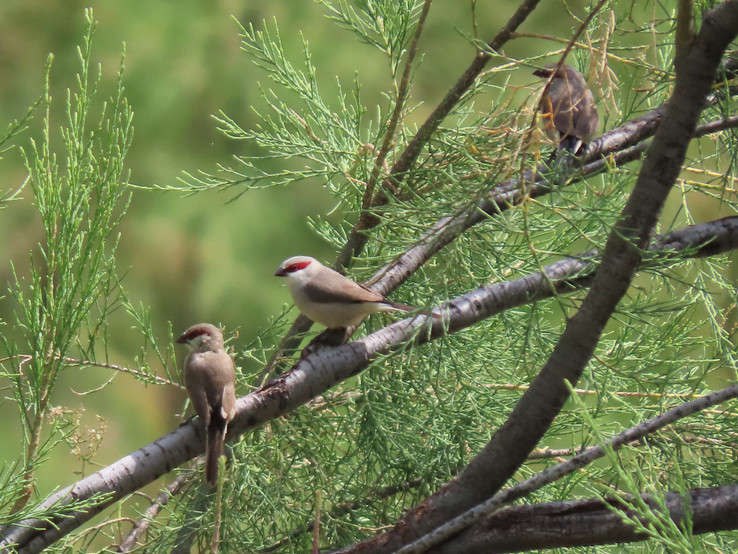















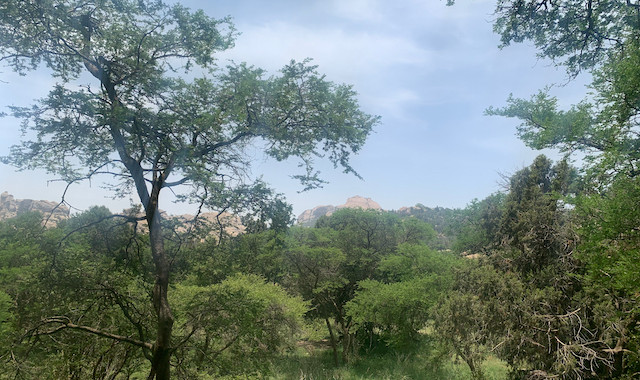



















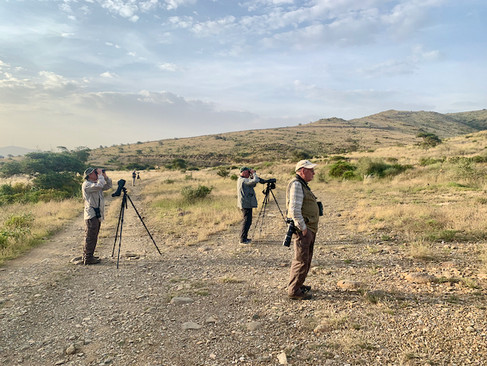



























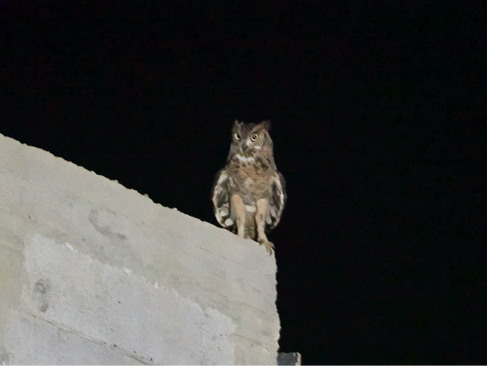

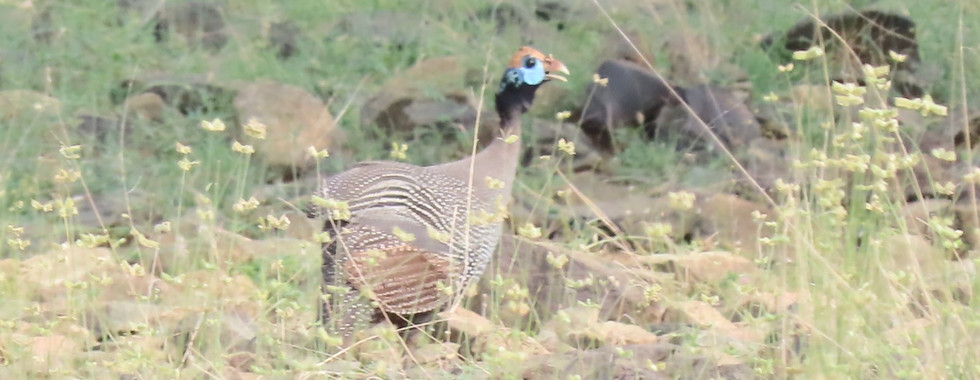





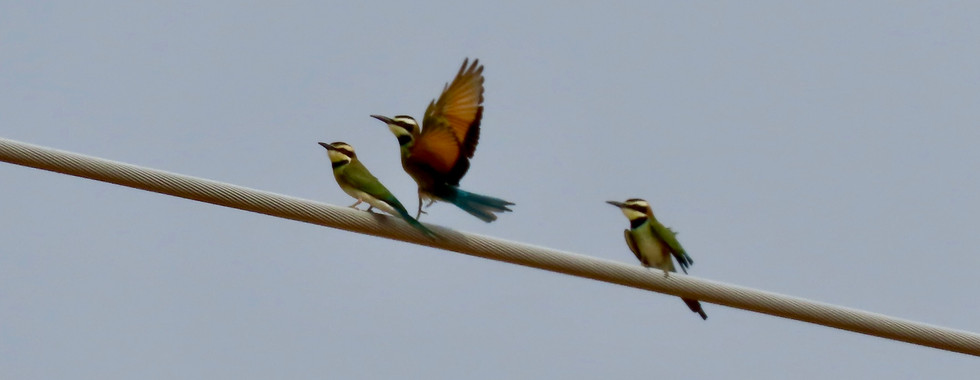







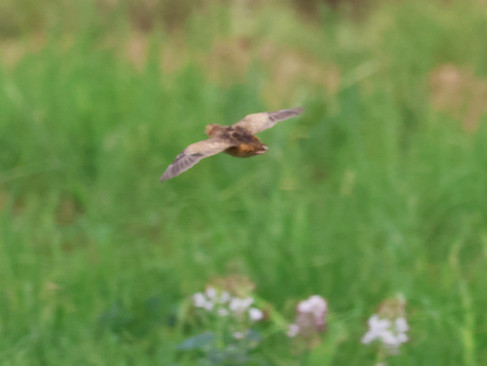
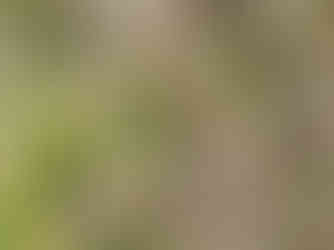


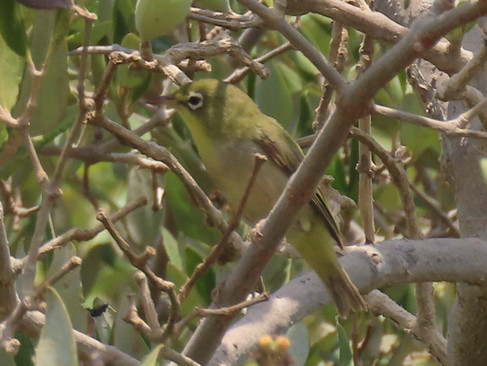

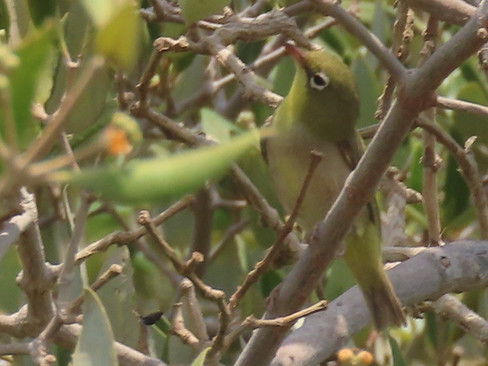

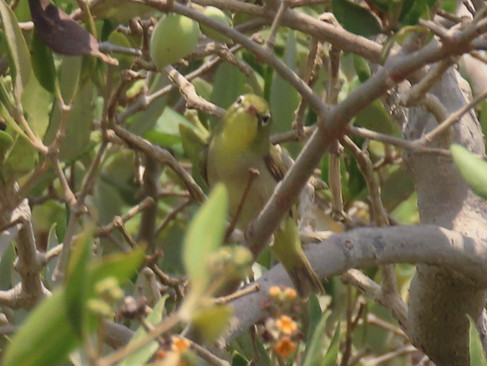



Comments